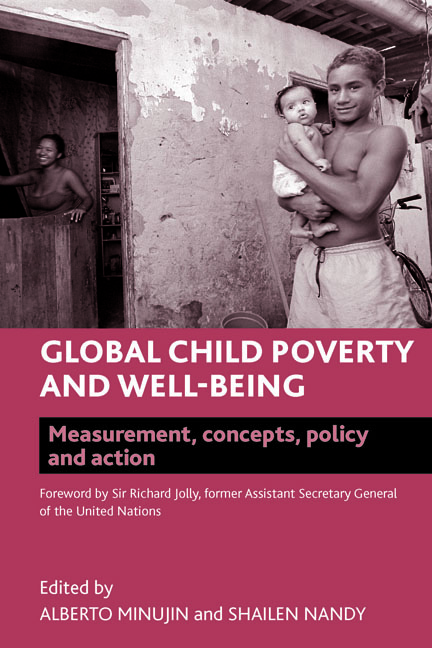three - Equity begins with children
Published online by Cambridge University Press: 07 September 2022
Summary
More than 100 years ago, Henry George – a colourful economist who ran for mayor of New York and whose brainchild is the famous board game Monopoly – noted that ‘the association of poverty with progress is the great enigma of our times’ (George, 1882). And so it remains today.
The recent stretch of globalisation has produced unprecedented prosperity and spectacular technological progress – not unlike that in the days of Henry George in the late 19th century. Yet, too much of the progress is bypassing the people who are most in need of it; so much so that an unacceptable high number of children continue to live in abject poverty.
Growth-mediated development
The global discourse on human development considers economic growth as the prime force for reducing poverty. The lack of growth is invariably seen as the main cause of poverty. Progress in human wellbeing is seen as the result of increased wealth and income. So, according to that outlook, almost everything is ‘growth-mediated’.
But after a decade of rapid economic growth in India, for instance, an excessive proportion of children continue to suffer from malnutrition. The Economist (2010) notes, ‘Since 1991 [India’s] GDP [gross domestic product] has more than doubled, while malnutrition has decreased by only a few percentage points.’ The usual response to such observations is that rapid growth has lifted hundreds of millions of people out of poverty in China and elsewhere. Yet that argument is not based on direct observation but on tautological reasoning. By defining poverty in terms of income alone and by using the international poverty line US$1.25/day as the metric, it is only normal to find a near-perfect correlation between growth and poverty. Unfortunately, that correlation is by and large a fiction of the mind.
All indicators are imperfect but some are more imperfect than others. The poverty indicator based on the US$1.25/day poverty line is particularly problematic. Fundamental criticism has been formulated by Saith (2005), Reddy (2008), Kanbur (2009) and Fischer (2010) among others. Its main weakness stems from the fact that the indicator is not based on direct observation but on complex calculations that entail arbitrary assumptions.
- Type
- Chapter
- Information
- Global Child Poverty and Well-BeingMeasurement, Concepts, Policy and Action, pp. 39 - 54Publisher: Bristol University PressPrint publication year: 2012
- 1
- Cited by

